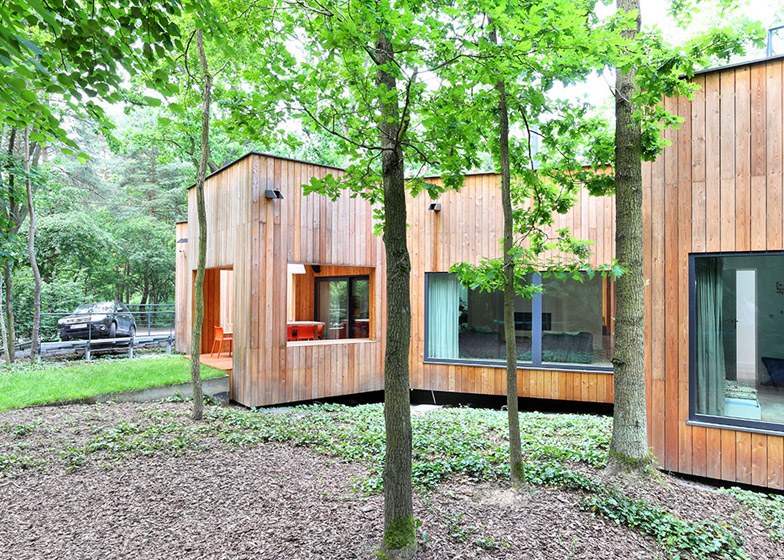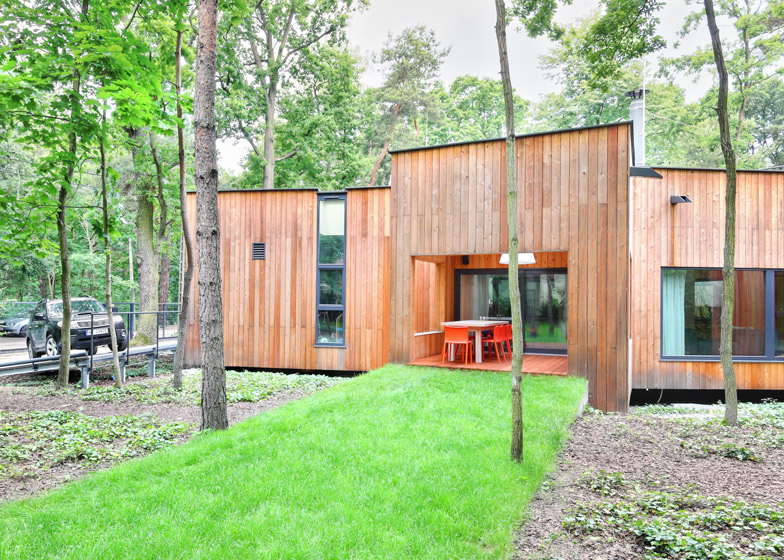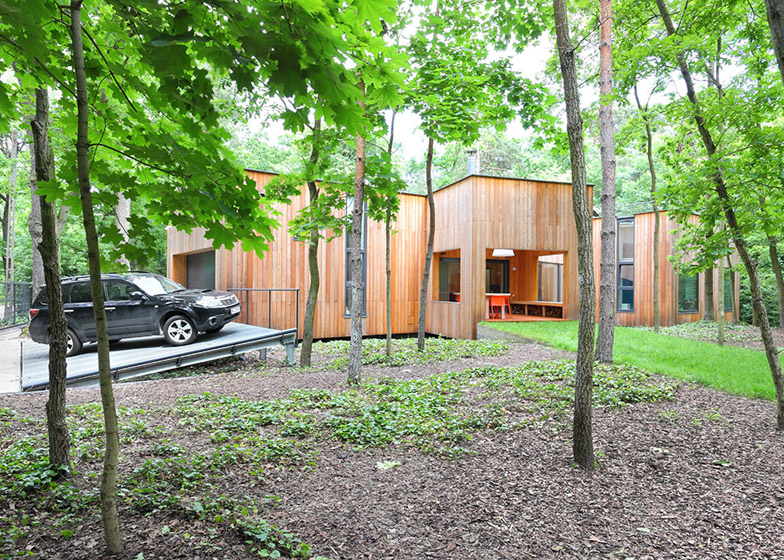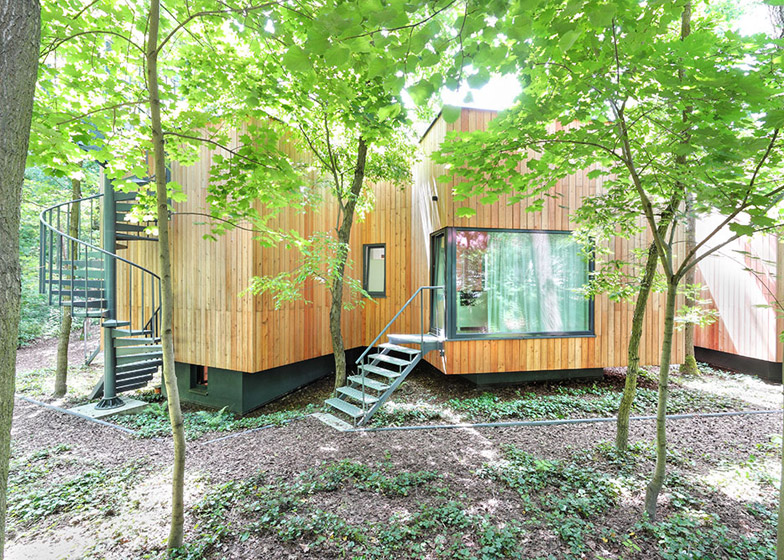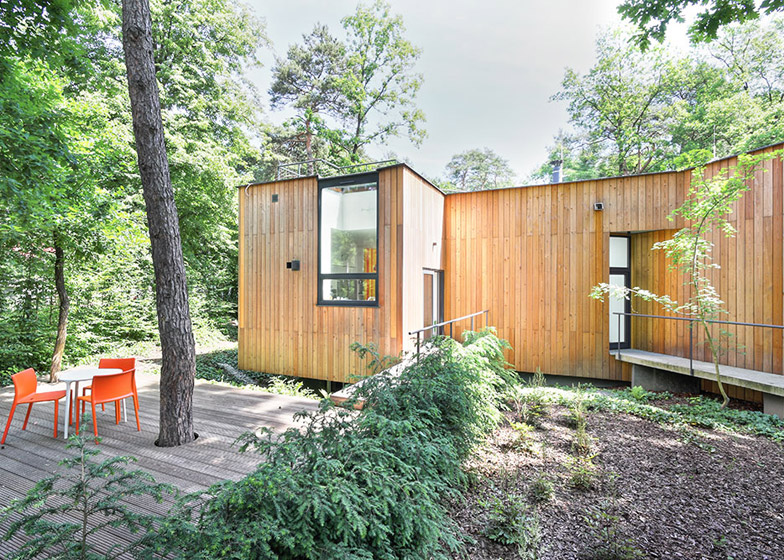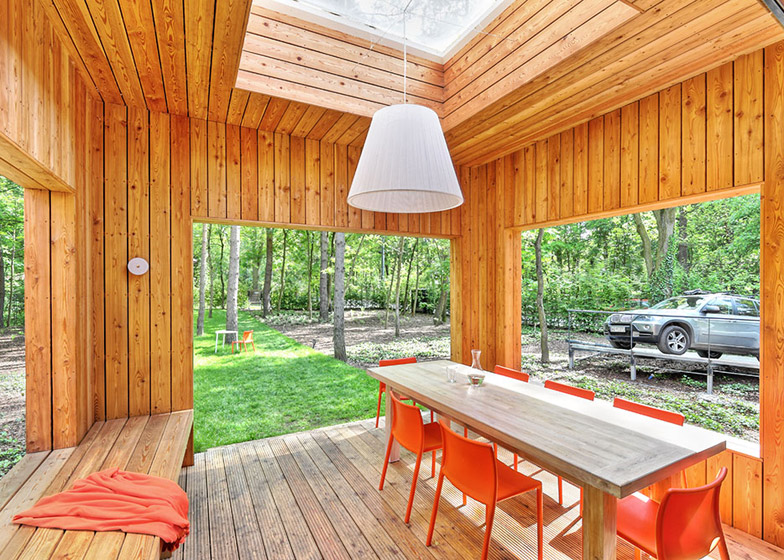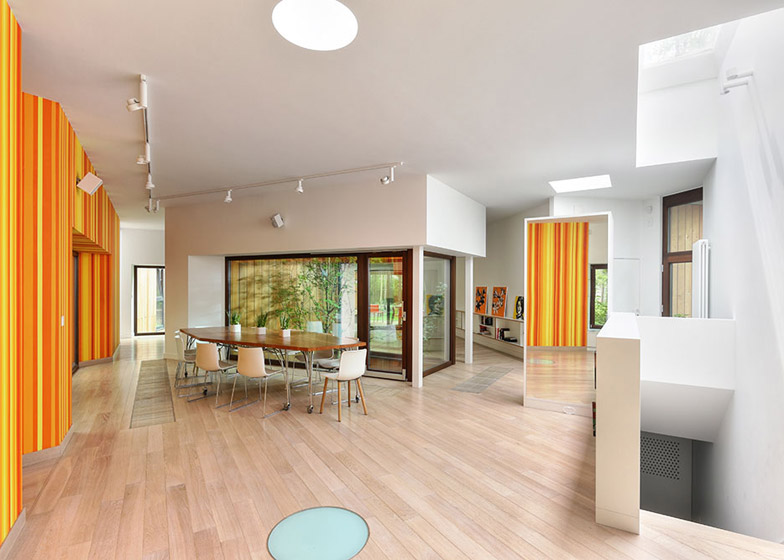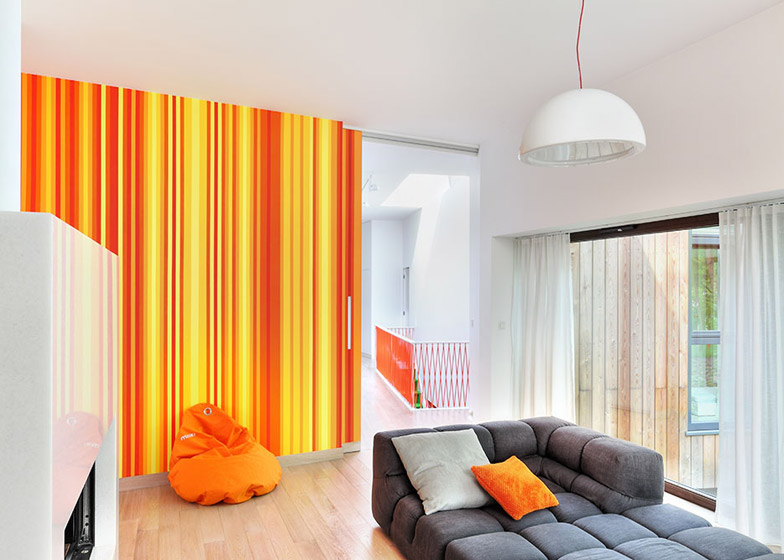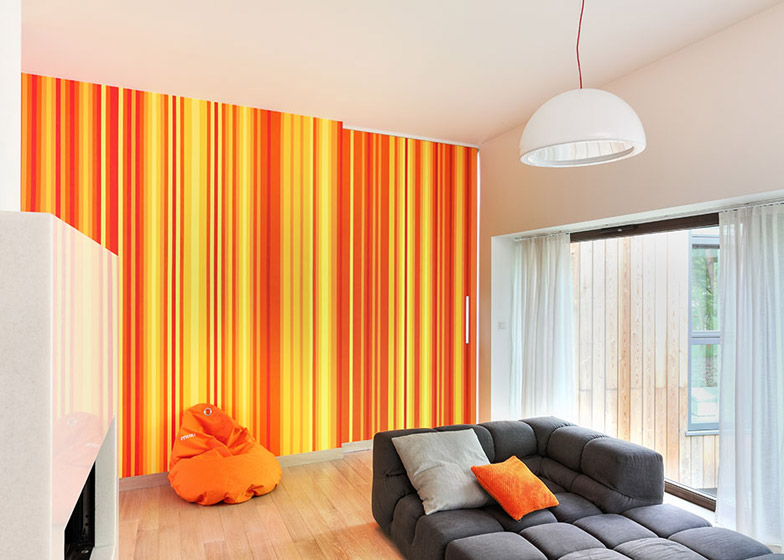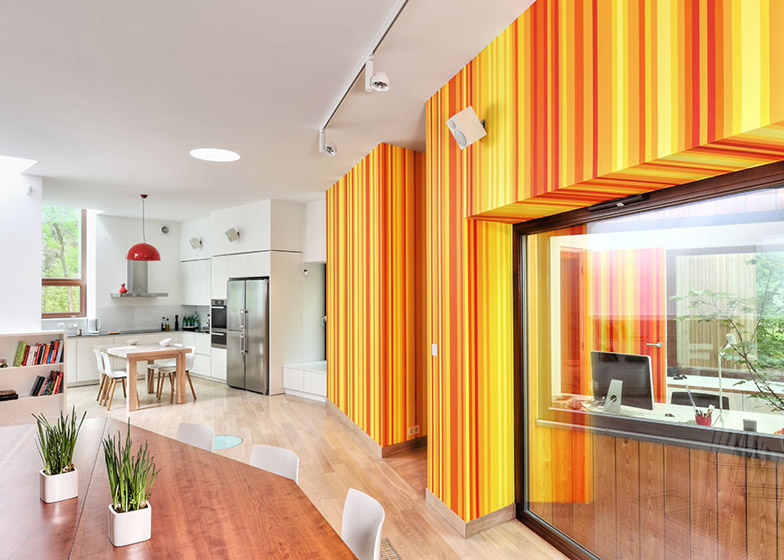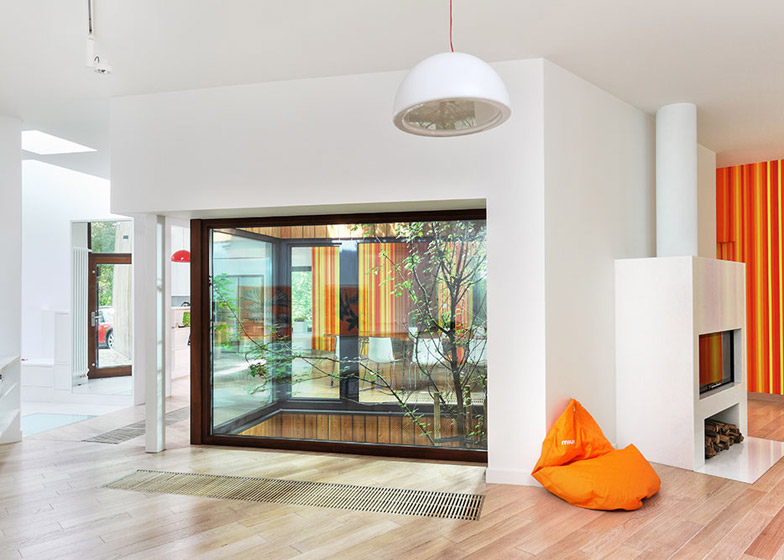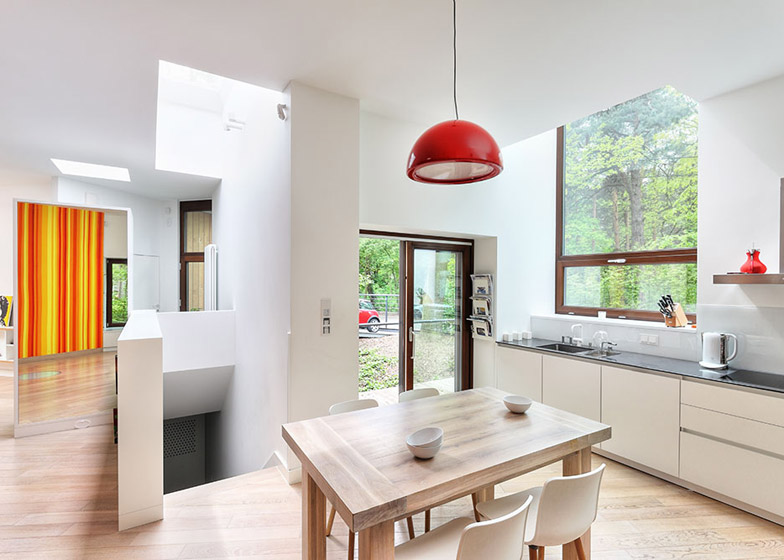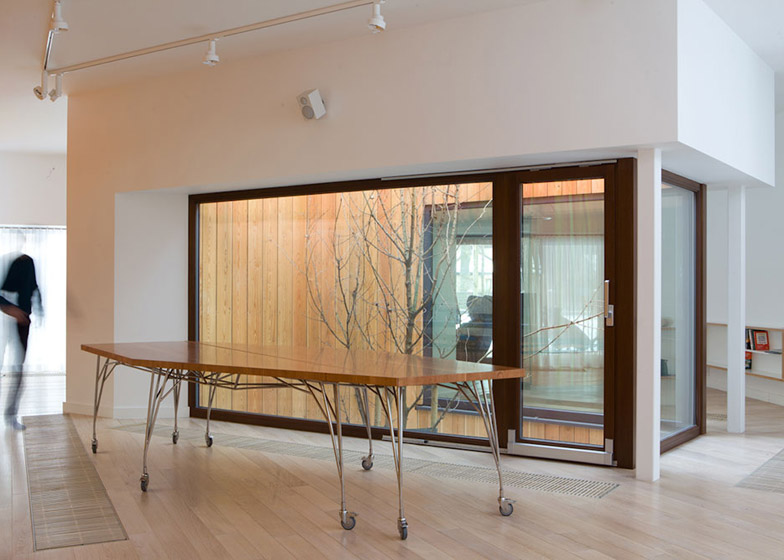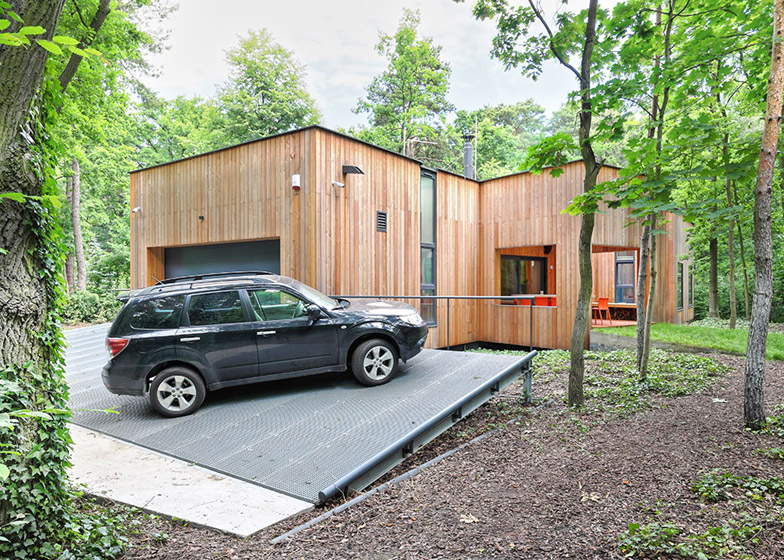Warsaw architect Jakub Szczęsny used a mathematical algorithm to help position the branching arms of this wooden house in the Polish garden city of Podkowa Leśna around the existing trees on its forested plot (+ slideshow).
Jakub Szczęsny of design studio Centrala Designers Task Force created the home for a family of six who procured a plot in a protected forest in Podkowa Leśna, one of several Polish municipalities created in the early twentieth century that followed British planner Ebenezer Howard's utopian Garden City concept.
Local planning regulations stipulated the need to maintain as many of the site's trees as possible, which led the architects to use a technique called a Voronoi diagram to determine the optimum position of the house's various rooms.
Voronoi diagrams divide spaces by connecting a series of points that are as close as possible to several other predetermined positions – in this case the trunks of the trees.
"We knew that the trees gave the potential for a unique house entering in a relationship with its layout, giving an opportunity for trees to grow and creating specific framing of the trees from inside," Szczęsny told Dezeen.
Wooden-clad volumes slot into gaps between the trees and the entire single-storey building is raised off the ground on a recessed platform, which provides additional space for the roots to grow.
The irregular floor plan is divided into open communal areas including the entrance, living room, dining room and kitchen, and more intimate spaces housing the bedrooms and their associated bathrooms and closets.
Three glass-walled voids at the centre of the house help to visually connect the various surrounding rooms and accommodate existing trees.
Windows frame views of the surrounding forest, while a series of skylights puncturing the roof enable additional natural light to reach the heart of the building.
Beneath the supporting podium is a basement level with two parts, divided by the position of tree roots. One part contains a home cinema, wine cellar, storage and a sauna, while the other houses a playroom for the children and a separate pantry and washing room.
Szczęsny was involved in instigating site-specific art and design projects as part of the brief for the house. Designer Paweł Jasiewicz developed a table with branching metal legs for the triangular dining space, which can be split in two and rearranged to alter the seating configuration.
Artist Maurycy Gomulicki created a bright orange and yellow mural that covers the wall separating the communal and private areas of the house. The mural continues across a sliding door between the living room and a corridor from which stairs descend to the playroom.
This staircase is covered in emerald green carpet, with a contrasting orange rope used for the balustrade and protective gate. A sloping steel platform connects the site's access road to a garage, which is positioned next to the entrance hall.
A covered loggia clad in the same Siberian cedar boards as the rest of the house projects out into the garden and houses a dining area illuminated by a skylight or by a pendant light suspended above it.
Photography is by Radek Wojnar.
Project credits:
Architecture: Jakub Szczęsny (Centrala), Ryszard Szczęsny (Studio Deco)
Author's Cooperation: Tomasz Fabirkiewicz
Structural design: Sławomir Pucek, Ryszard Nalepski
Landscape design: Robert Nowicki (Urbandesign)
Table design: Paweł Jasiewicz
Murals: Maurycy Gomulicki
In-situ art installations: Kuba Bąkowski
Photos: Radek Wojnar
Contractor: Nowy Konstancin
Design period: 2009-2011
Construction: 2011-2013

